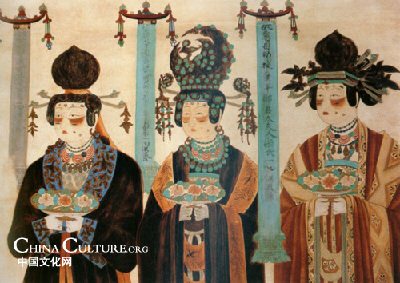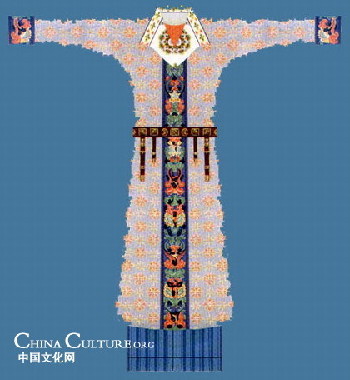
In Chinese history, the Tang Dynasty (AD618-907) was a period of unity and prosperity when the polity and economy were highly developed.
Materialistic abundance and a relatively relaxed social atmosphere gave the Tang Dynasty an unprecedented opportunity to develop culturally, reaching its height in poetry, painting, music and dance.
Based on the progress made in silk reeling and dyeing techniques, the variety, quality and quantity of textile materials reached an unprecedented height.
The clothing materials in Tang were exquisite and the dresses of the upper class were mainly made of silk and famous for softness and lightness. The structure was natural, graceful and elegant, and adornments were splendid.

The most outstanding garments in this great period of prosperity were women's dresses, complimented by elaborate hairstyles, ornaments and face makeup.
The Tang women dressed in sets of garments, each set a unique image in itself. In general, the Tang women's dresses can be classified into three categories:
The traditionalruqunor double layered or padded short jacket that was typical of central China; thehufu, or alien dress that came from the Silk Road;, as well as the full set of male garments that broke the tradition of the Confucian formalities.
Ruqunis made up of the top jacket and long gown and a skirt on the bottom. The Tang women inherited this traditional style and developed it further, opening up the collar as far as exposing the cleavage between the breasts. This was unheard of and unimaginable in the previous dynasties, in which women had to cover their entire body according to the Confucian classics. But the new style was soon embraced by the open-minded aristocratic women of the Tang Dynasty.
|



